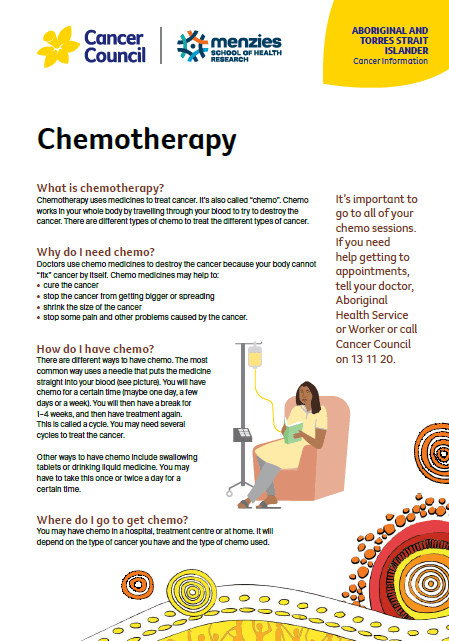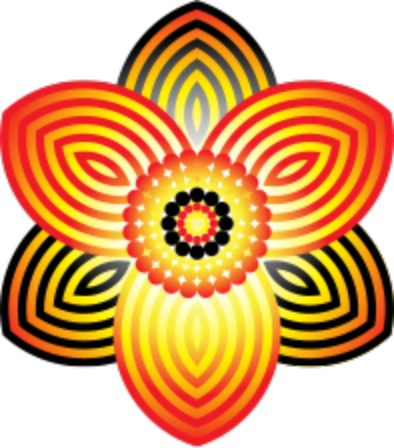- Home
- About cancer
- Treatment
- Chemotherapy
Chemotherapy
Chemotherapy, also called chemo, uses medicines to treat cancer.
Click on the headings below to learn more.

Chemotherapy uses medicines to treat cancer. It’s also called “chemo”. Chemo works in your whole body by travelling through your blood to try to destroy the cancer. There are different types of chemo to treat the different types of cancer.
Doctors use chemo medicines to destroy the cancer because your body cannot “fix” cancer by itself.
Chemo medicines may help to:
- cure the cancer
- stop the cancer from getting bigger or spreading
- shrink the size of the cancer
- stop some pain and other problems caused by the cancer.
It’s important to go to all of your chemo sessions. If you need help getting to appointments, tell your doctor, Aboriginal Health Service or Worker or call Cancer Council on 13 11 20.
There are different ways to have chemo. The most common way uses a needle that puts the medicine straight into your blood (see picture).
You will have chemo for a certain time (maybe one day, a few days or a week). You will then have a break for 1–4 weeks, and then have treatment again. This is called a cycle. You may need several cycles to treat the cancer.
Other ways to have chemo include swallowing tablets or drinking liquid medicine. You may have to take this once or twice a day for a certain time.
When you are having chemo, check your temperature every day or if you feel sick. Call the hospital or treatment centre if you have a temperature of 38˚C or higher.
You may have chemo in a hospital, treatment centre or at home. It will depend on the type of cancer you have and the type of chemo used.
Your chemo doctor (called a medical oncologist) will tell you how long you should have chemo. This will depend on:
- the type of cancer you have
- the type of medicine your doctor gives you
- how you feel when you’re getting chemo.
Chemo medicines are really strong so they can destroy the cancer in your body. Sometimes these medicines can affect how you look and feel (called side effects). Many side effects can be treated, and often go away after treatment stops.
Talk to your doctor or Aboriginal Health Worker if you have any worries about treatment or side effects. Most people don’t get all the side effects.
Your doctor will tell you what to expect, but you may:
- feel a little tired or very tired (fatigue)
- have nausea (feel sick) and vomit (spew)
- have a sore mouth and throat (e.g. ulcers or thrush)
- lose hair from your head and parts of your body
- have some pain or numbness or tingling
- have hard poos that are difficult to pass (constipation) or watery poos (diarrhoea)
- be more likely to get infections.
Some women may have women’s issues.



